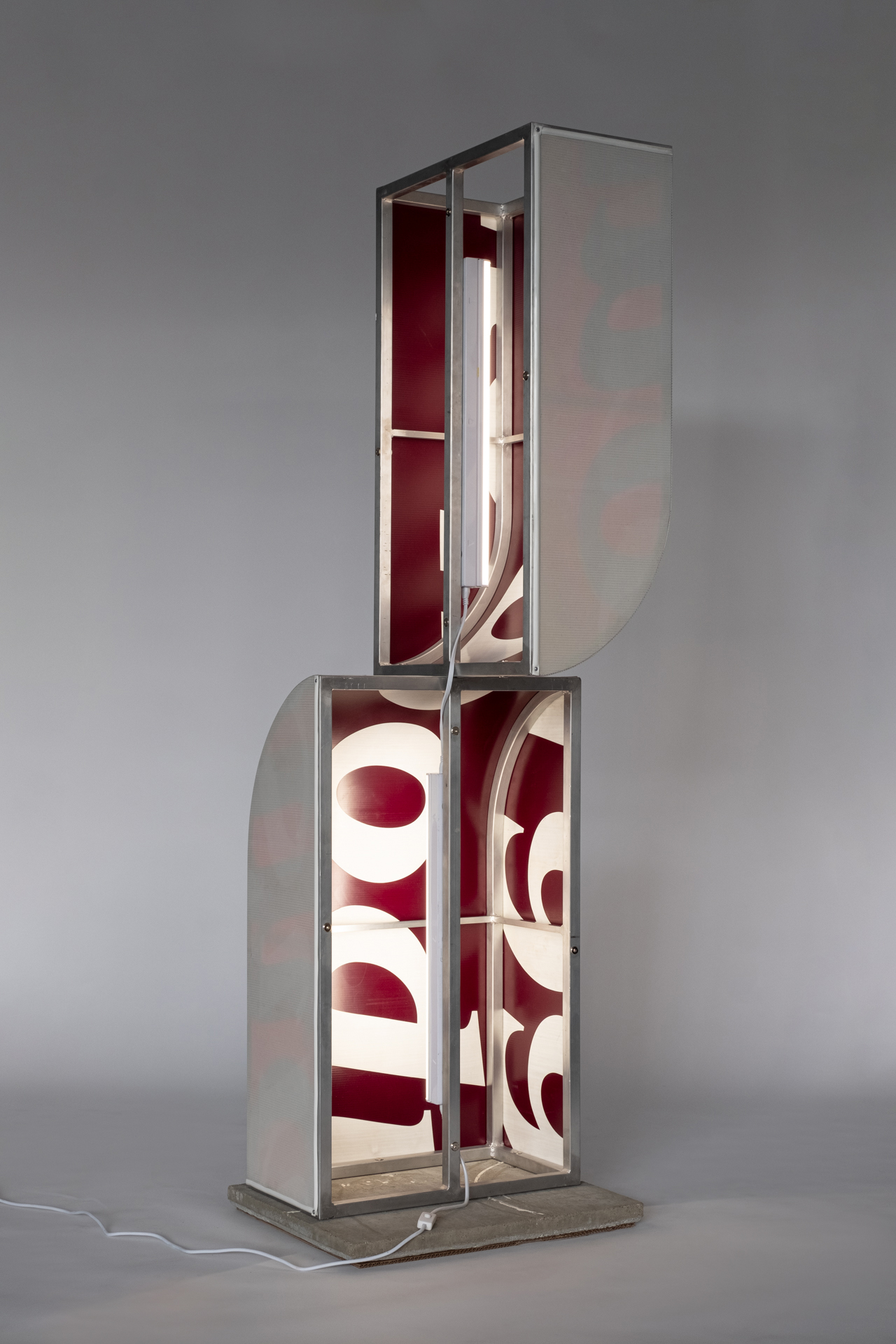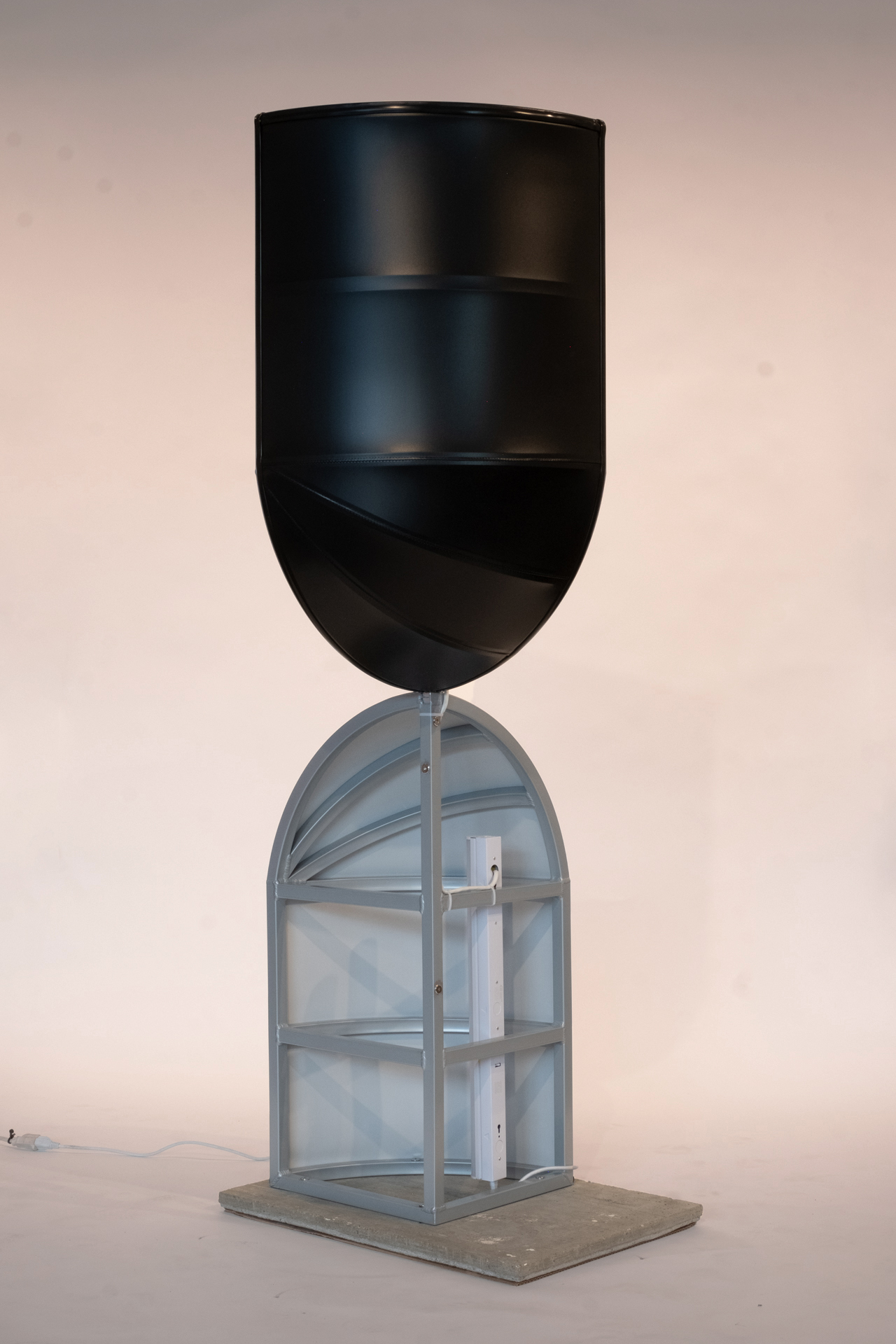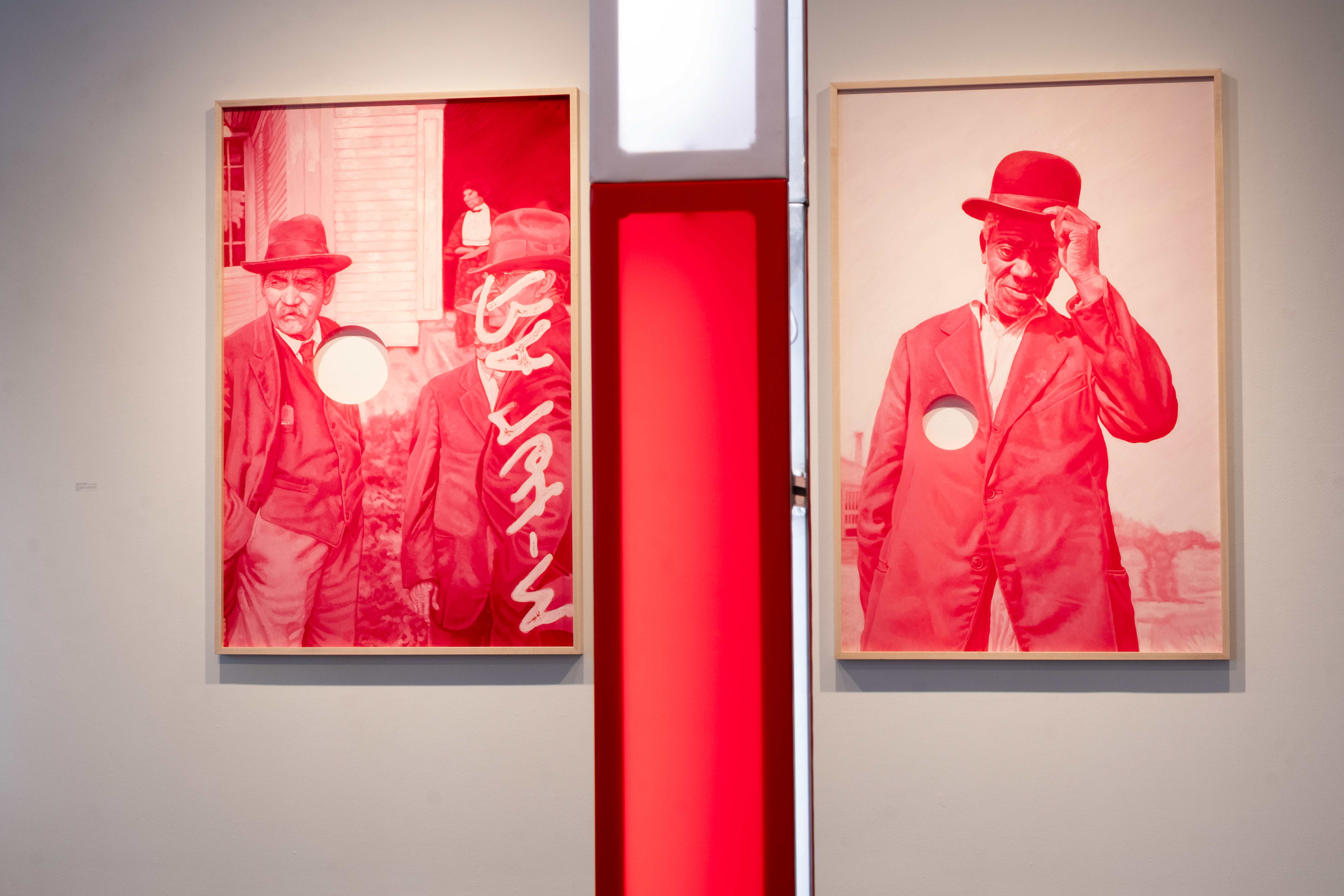




Plastic Sunrise takes up the relationship between imagery, truth, and the often-invisible frameworks of American cultural production. The exhibition balances a Romantic faith in artistic representation with a wariness of the structures which produce, censor and arrange these representations. Through their interconnected bodies of work, Phillips and Darwent gesture towards utopian ideals of progress and truth—of collective identities, shared spaces, objective histories—while also revealing the forces which put these aspirations out of reach.




Shane Darwent fabricates large-scale minimalist sculptures that take the form of stark, mutated storefront awnings. These internally lit structures feel at once familiar and alien: black vinyl wrapping around steel ribs, voids haloed in fluorescent glow creating an illusory flatness, primary colored vinyl reversed and internally illuminated. These constructions are subconsciously associated with a specific function and context: advertisement and shelter; perennial cycles of urban renewal and decay. Each sculpture amalgamates these familiar forms and materials into confrontational monolith, marking an inversion of the passive relationship typical between individual and architecture.
Here, the usually-ambient cycles of urban renewal/decay become foreground. The sculptures instigate a spatial rearrangement—their inner-constructions alternately shrouded and illuminated—as viewers navigate the gallery space and view the works from different vantage points. The sculptural works reflect the ambivalence of a built environment that has an undeniable, austere beauty; in which entropy yields ruins while development births pristine new fabrications a block over; an environment that bears a lived history, inscribed with territorial machinations of capital, of displacement, but also of placemaking.







Joel Daniel Phillips’ work engages the “killed negatives” of the depression-era Farm Security Administration archive—images deemed “unfit” by the Administration’s director, the negatives cursorily hole-punched to prevent reproduction. Phillips meticulously reproduces these discarded negatives in brilliantly-hued, monochromatic oils on transparent acrylic sheets. Dust flanks expressions of workers rendered in magenta with photographic levels of detail, down to the slight blur of movement or softening effect of depth-of-field as rendered through camera shutter.
The artist’s painstaking recreation of these images conjures the aura of the original image, creating a conduit for transcendental connection between viewer and subject. However, this faith in the potency of representation is not uncontested. In each piece, a black, circular void interrupts the enlarged image; often puncturing the sky or piercing the subject’s body. In recreating these cast-off images, Phillips draws attention to the medium itself—and, more importantly, to the powers which structure this history-in-photographs.
Plastic Sunrise surveys a fabricated horizon. The black voids on the surface of Phillip’s paintings mirror Darwent’s monolithic sculptures, revealing light in the act of obscuring it, the apparatus suddenly made visible. The result of these intersecting bodies of work is an effort towards transparent re-presentation of history and a nuanced meditation on the overlooked-everyday.










